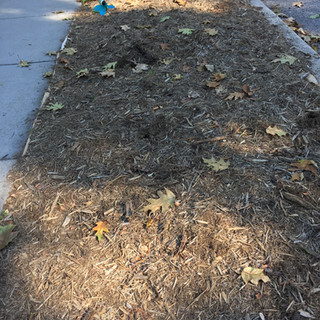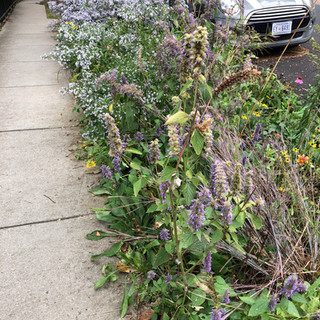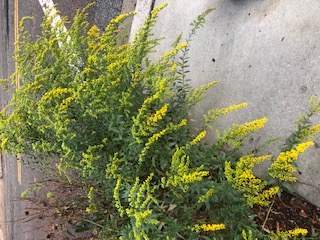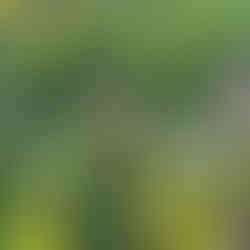Chesapeake Native Plants: Tree Lawn Thinking for Sunny Areas
- Nuts for Natives
- Jul 7, 2021
- 3 min read
Space of Opportunity!

Should you have space between your sidewalk and street that you can plant, this is a great time to think about getting started. Soil in these areas can be quite compacted and of very poor quality. Covering the area with cardboard or newspaper and compost or mulch to smother weeds for several months will create better soil conditions and help prepare the space for planting. Cover now and you may be ready to plant in fall. Not all jurisdictions allow homeowners to plant in this area so best to check first.
Your choice of plants for this location is critical. Whether in shade or sun, tough plants are needed as the area is often subjected to foot, pet and even bike traffic.
This particular space in front of our house gets 8 hours of full, unrelenting sun. When I started this planting in the fall of 2016, it was a weedy, compacted area that at one time was covered in grass. I "mulched" with a layer of cardboard and 3" of shredded hardwood mulch for four months to kill the weeds and remaining grass. The cardboard was tacked down with landscape staples to keep it in place. In fall, I planted 12 quart sized perennials: salvia, coneflower, coreopsis and phlox. During 2017, those grew well but did not cover enough space, creating a major need for weeding. The following year, I added a few more perennials but, still, it was not enough to cover the ground and weeds thrived.
The following spring, in 2018, I ordered the eastern xeriscape wildflower seed mix from American Meadows and sowed it in early spring. The native wildflowers flourished.
That year, the blooms in June were beautiful but by August, the area was looking a bit sad. One of the things about meadows in nature is they are always evolving. The first year, blooms were largely from annuals. Most of the perennials had not yet established and the annuals succumbed to the dry sunny conditions of August.
I added white wood aster (Euribia divaricata) and several goldenrod (Solidago canadensis) around the edges to add some life and fall color.
In 2019, in early summer, the goldenrod grew in leaps and bounds. I had to pull them out as it was clear they were going to take over the entire space. I should have chosen a less aggressive goldenrod such as little lemon (Solidago 'Dansolitlem" Little Lemon,) a hybrid of the native which stays short and tidy in stature, which I did eventually add to the edges to help keep things contained. I also added non-native orange day lilies I received as a gift.

In 2020, things were looking great in early summer and better through late summer and fall. I did pull out some of the wild senna (Senna hebecarpa), a native annual yellow flower that self sows prolifically. Four years in, birds and pollinators visited this little meadowette in droves. Goldfinches, butterflies, and bees alighted continually through summer and into fall. It was quite alive! To attract birds, it is important not to deadhead all the flowers so that some can go to seed.

This year, I cut back the ox-eye sunflower (Heliopsis helianthoides) and asters in mid June and am about to repeat that practice, also known as the "chelsea chop," to reduce the height a bit. Right now, it looks robust.
If this is too wild looking for your taste, you might want to limit the types of plants, making sure to include early, mid and late summer blooming perennials, for a more cohesive look. The wildflower seed mix did, though, cover a lot of ground for very little cost and now, I can edit out plants as needed.
My lessons learned are to plant as thickly as feasible to cover as much ground as you can to reduce weed growth. If I were to do plant another are like this , I would select three perennials to repeat and sow a seed mix with just two or three additional perennial wildflowers to keep the planting slightly more uniform.
Whether you call it the tree lawn, the hell strip, the easement or the heaven strip, this is an opportunity!

































Comments